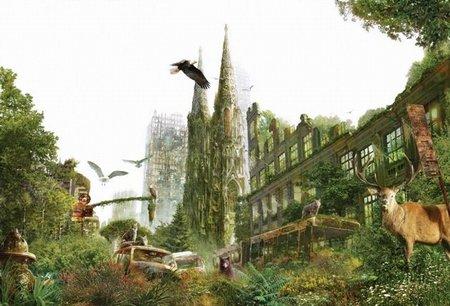| An Earth without people | 2007-07-05 23:30 2 comments |
 by Flemming Funch by Flemming FunchI've read similar things before, and it always puts our civilization a bit in perspective. Science writer Alan Weisman has written a book called "The World without Us", and Scientific American has an article: According to Weisman, large parts of our physical infrastructure would begin to crumble almost immediately. Without street cleaners and road crews, our grand boulevards and superhighways would start to crack and buckle in a matter of months. Over the following decades many houses and office buildings would collapse, but some ordinary items would resist decay for an extraordinarily long time. Stainless-steel pots, for example, could last for millennia, especially if they were buried in the weed-covered mounds that used to be our kitchens. And certain common plastics might remain intact for hundreds of thousands of years; they would not break down until microbes evolved the ability to consume them.It is an interview too. Here's a tidbit: Q: If human beings were to disappear tomorrow, the magnificent skyline of Manhattan would not long survive them. Weisman describes how the concrete jungle of New York City would revert to a real forest.There's something strangely fascinating about the vision of nature taking over after humanity disappears. An overgrown New York, again having hills and streams, and the Statue of Liberty's torch sticking out of a beach somewhere. I can't quite decide which side I'm on, nature's or ours. But I hope it won't keep being a matter of sides, and that we'll work it out in more harmonious ways. |